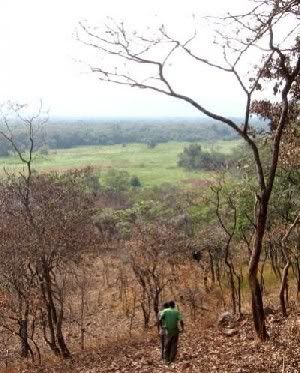Underground Munchies: Chimps Dig ‘Em
Anthropologists working in western Tanzania recently found evidence that chimpanzees use sticks to dig up edible roots, bulbs and tubers—a behavior previously thought to be a uniquely human adaptation. (Read about other such behaviors.)
The chimps live in Ugalla, an arid woodland savanna (above). They've been watched by scientists involved in the Ugalla Primate Project since 1989. From May to October, the normally lush region gets extremely dry, and food becomes scarce. The environmental challenges here are very similar to those faced by humans earliest ancestors, according to the project's researchers, whose findings appeared yesterday in the early edition of the Proceedings of the National Academy of Sciences.
The researchers didn't actually see the chimps digging. But they did find holes in the ground beneath chimpanzee "nests" (the piles of branches and leaves in trees where the animals sleep). And near the holes, they found chimp knuckle prints, feces and chewed-up wads of tubers (apparently, chimps are known for this kind of spitting.)
You'd think that digging for underground food would be an evolutionary adaptation to surviving the arid season. You'd be wrong: The researchers observed that the chimps dug only during the rainy season, when above-ground food was abundant. This surprise finding, according to head researcher James Moore, "challenges our current hypotheses about the role of such foods in hominid evolution and may help reframe the scientific debate."

(James Moore, UCSD)